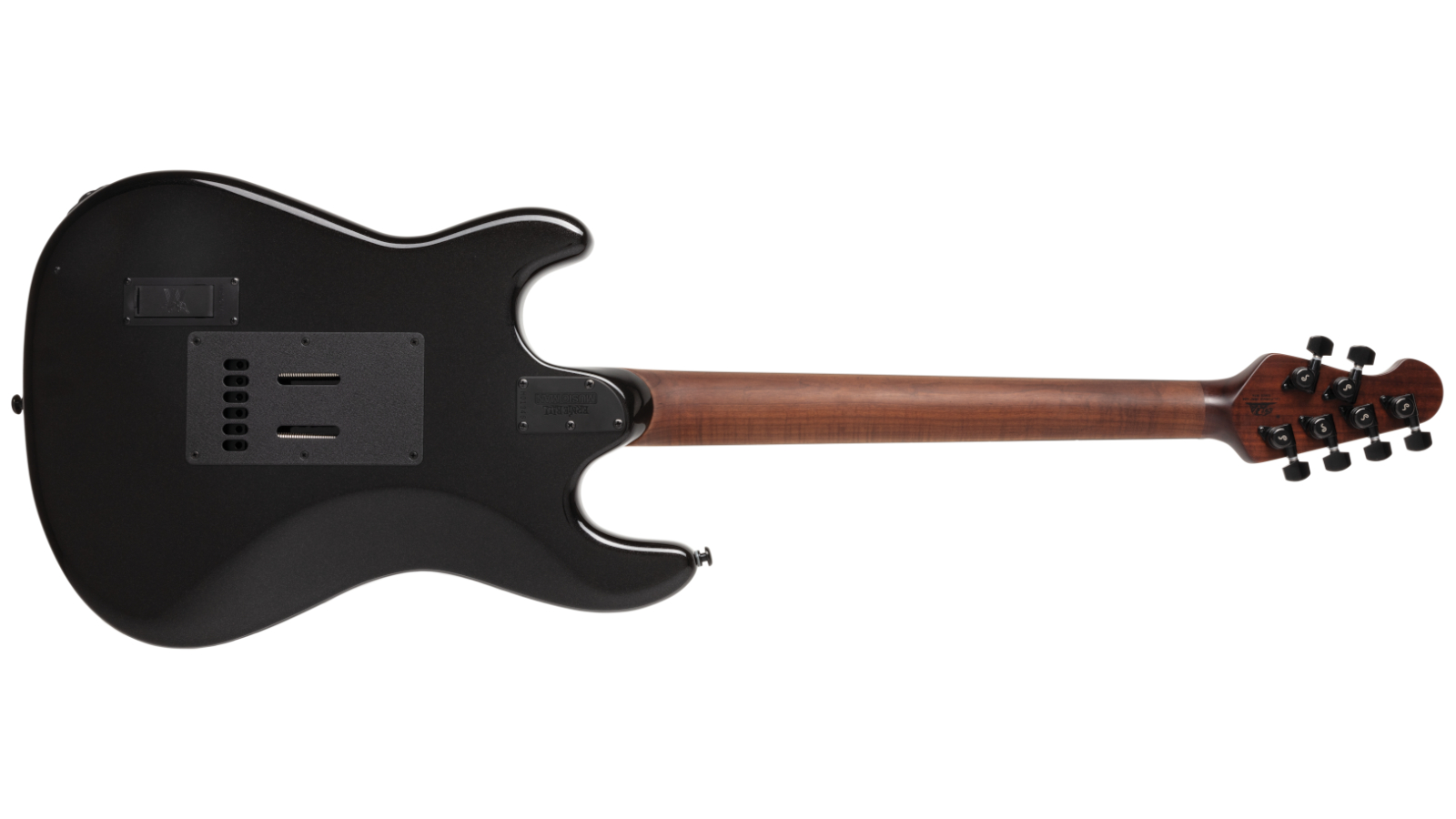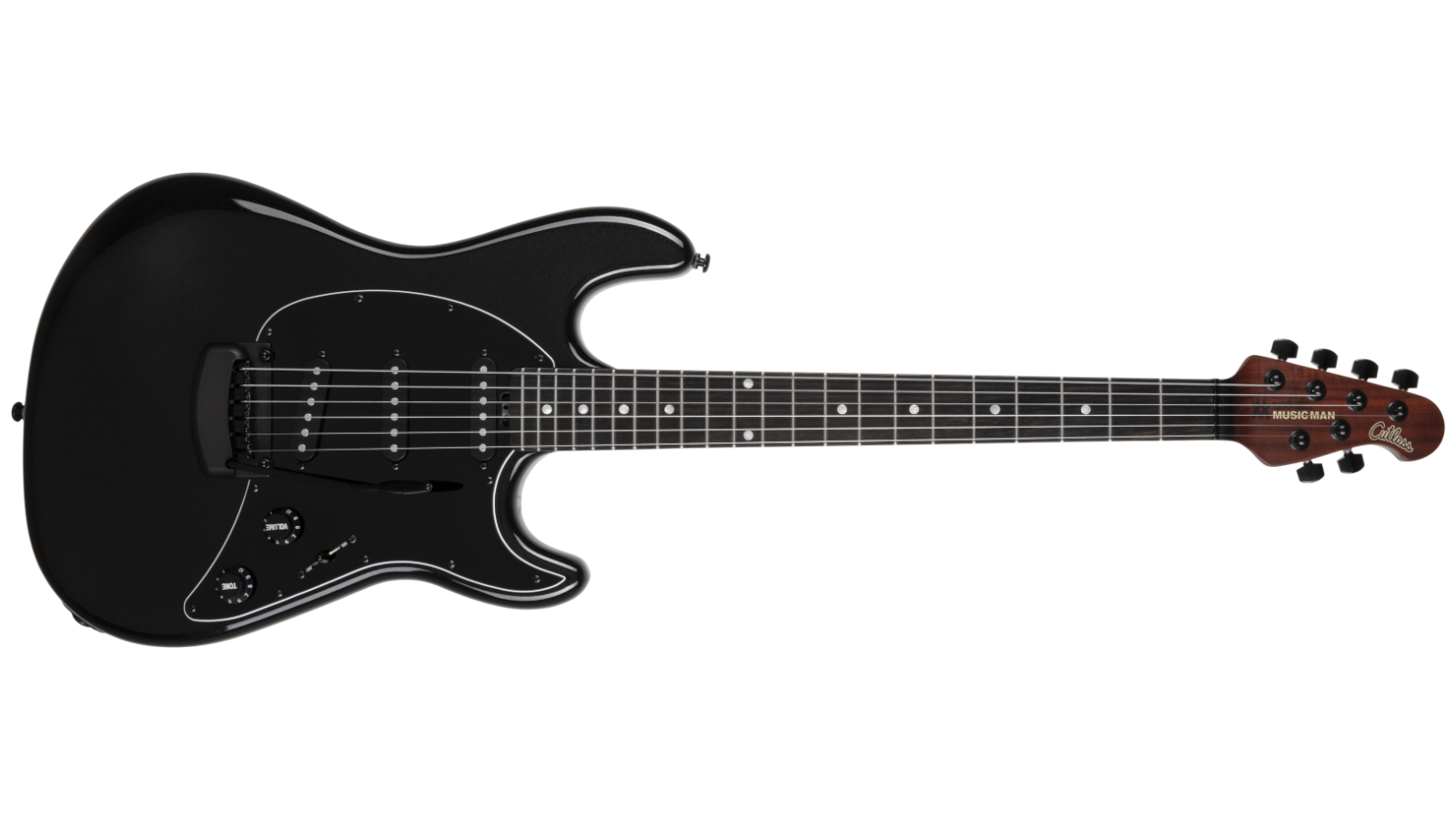GuitarPlayer Verdict
Represents a significant upgrade and an advanced level of performance
Pros
- +
Well-built and well-conceived
- +
Great full-range pickups
- +
Handy gain boost
- +
Broad sonic capabilities
Cons
- -
This example tips in a little heavy
You can trust Guitar Player.
Born out of the California bolt-neck electric guitar tradition, Ernie Ball Music Man has nevertheless continued to strive for originality and innovation. It’s an attitude that has won over plenty of pro players, especially since the Ernie Ball company took the reins at Music Man back in 1984.
The new HT Series shows a company that’s still far from ready to rest on its laurels. As such, the Cutlass HT on review here might appear to be a familiar model, but it represents a significant shake-up for a modern classic from the Ernie Ball Music Man stable.
In one sense, the HT Series is all about the newly developed Music Man HT pickups, the result of 10 years of intensive R&D.
Along with them, though, EBMM has taken the opportunity to introduce new finishes and features to entirely distinguish the HT Series from the standard models of similar names, which still exist in the catalog (listing at $300 less than the HTs, it’s worth pointing out).
The Cutlass model is EBMM’s take on the classic asymmetrical-double-cutaway, bolt-neck model from Fullerton, with three single-coil pickups, vibrato and a 25 ½-inch scale length.
Our test sample looks particularly slick in its new Midnight Rider finish
But even before these latest upgrades, the model displayed several clever twists that give it a personality all its own.
Among these, the body shape, while obviously inspired by the classic template, is clearly something a little different, too, streamlined and redrawn, with two knobs instead of three and a sleeker look to the EBMM tremolo bridge, in particular.
All the latest guitar news, interviews, lessons, reviews, deals and more, direct to your inbox!
Our test sample looks particularly slick in its new Midnight Rider finish, a none-more-black regalia that displays a fine sparkly metallic layer amid the body finish, complemented by matte-black hardware and black plastics.

The solid alder body weighs in at around 8.2 pounds – just a little hefty for my tastes, for a guitar of this breed at least, although it’s no boat anchor.
The neck on the Cutlass HT represents a component long regarded as one of EBMM’s most innovative. The five-bolt attachment with sculpted heel, body-end truss-rod adjustment point, and four-plus-two headstock are joined by an extremely comfortable asymmetrical profile.
EBMM has been hip to roasted maple for several years, and this piece displays some subtle flame that helps it sit well with the body’s black finish and the ebony fingerboard, which carries another contemporary upgrade in its 22 stainless-steel frets.
Of course, a big part of what launches the Cutlass HT into the 21st century is found internally.
In addition to features new to this series, the model sports EBMM’s existing Silent Circuit, a hum-canceling network that nixes noise post-pickup while enabling the units themselves to remain proper single-coils.
And what single-coils they are.
Resulting from 10 years of guitar-string research at Ernie Ball, the new HT pickups are traditional electro-magnetic pickups in the broad sense, but they’re made with heat-treated (hence the HT in the name) pole pieces and large neodymium magnets for a bigger, tighter low end, extended highs and more output overall, without sacrificing a clean and balanced sound.
A big part of what launches the Cutlass HT into the 21st century is found internally
The bridge pickup is overwound with plain enamel wire (as used on the classic PAF humbucker, for example), for a thicker sound, while the neck and middle pickups are underwound using Formvar-coated wire as used on original S-style pickups, for a more traditional tone and response.
On top of all this, the Cutlass HT includes a transparent buffered output to retain signal integrity regardless of your volume control setting and long cable runs.
And, finally there’s the nifty internal boost circuit, engaged via a push-push switch on the volume control and powered by a nine-volt battery in a hatch around the back that requires no screwdriver for entry.
The boost circuit is preset at the factory for +12dB, but an internal trim-pot lets you lower that or raise it to as much as 20dB.
I tested the Cutlass HT through a Princeton Reverb tube amp combo and a Friedman Dirty Shirley Mini amp head with a 2x12 cab.
At its core, this guitar simply plays and sounds like a great, classic S-style guitar.
It might look a little different and carry several twists in the build and components departments, but close your eyes and dig into your favorite riffs from SRV, Mark Knopfler, David Gilmour, Hendrix and other Stratocaster players and there’s nothing here to dissuade you from the authenticity of the experience.
In fact, engage that push-push boost on the volume pot – more of which to come – and you might even find yourself attaining some of these tones more easily than you do on many passive S-style guitars.
I found the HT pickups extremely dynamic and expressive, and easily capable of doing anything I’d hope to achieve with this style of guitar, and more
The HT pickups do indeed produce a clear, balanced, full-fidelity signal, but I feel it’s a mistake to come in with any preconceptions that they’ll be inherently modern or sterile. I found them extremely dynamic and expressive, and easily capable of doing anything I’d hope to achieve with this style of guitar, and more.
They’re also well balanced, with just enough added grunt from the bridge position to beef up the twang and sidestep the ice-pick treble, while attaining traditional tones.
Aligned with what I already said about the versatility in general, these HT pickups actually broaden the range of what can be achieved with this guitar, rather than hinder any efforts to attain classic or vintage tones.
The boost works very well and constitutes a significant bonus feature, adding a transparent, high-fidelity preamp into the chain at the press of a knob. At the preset +12dB, it’s a little much for a quick solo boost, knocking volume levels up significantly, but as an always-on feature, with the guitar’s volume control as the preamp gain, it adds a ton of range and flexibility.
Dialing the volume control down to about five or six achieves unity with the Cutlass HT’s unboosted levels, so if you start there, you’ve got a higher ceiling to work with as you wind it up for more bite, sting and drive.
Overall, if not an entirely new experience from the existing Cutlass SSS, the HT represents a significant upgrade and an advanced level of performance that plenty of players should really dig.
Specifications
- NUT: GraphTech, 1 5/8” wide
- NECK: Roasted maple
- FRETBOARD: Ebony, 25.5” scale, 10” radius
- FRETS: 22 high profile/medium width
- TUNERS: Schaller M6-IND locking
- BODY: Solid alder
- BRIDGE: Music Man modern tremolo with cover, bent-steel saddles
- PICKUPS: Three Music Man HT single-coils
- CONTROLS: Volume with push-push gain boost, tone, five-way switch
- FACTORY STRINGS: Ernie Ball M-Steel Hybrid Slinky .009–.046
- WEIGHT: 8.2 lbs
- BUILT: USA
Visit the Music Man website for more information.
Dave Hunter is a writer and consulting editor for Guitar Player magazine. His prolific output as author includes Fender 75 Years, The Guitar Amp Handbook, The British Amp Invasion, Ultimate Star Guitars, Guitar Effects Pedals, The Guitar Pickup Handbook, The Fender Telecaster and several other titles. Hunter is a former editor of The Guitar Magazine (UK), and a contributor to Vintage Guitar, Premier Guitar, The Connoisseur and other publications. A contributing essayist to the United States Library of Congress National Recording Preservation Board’s Permanent Archive, he lives in Kittery, ME, with his wife and their two children and fronts the bands A Different Engine and The Stereo Field.







